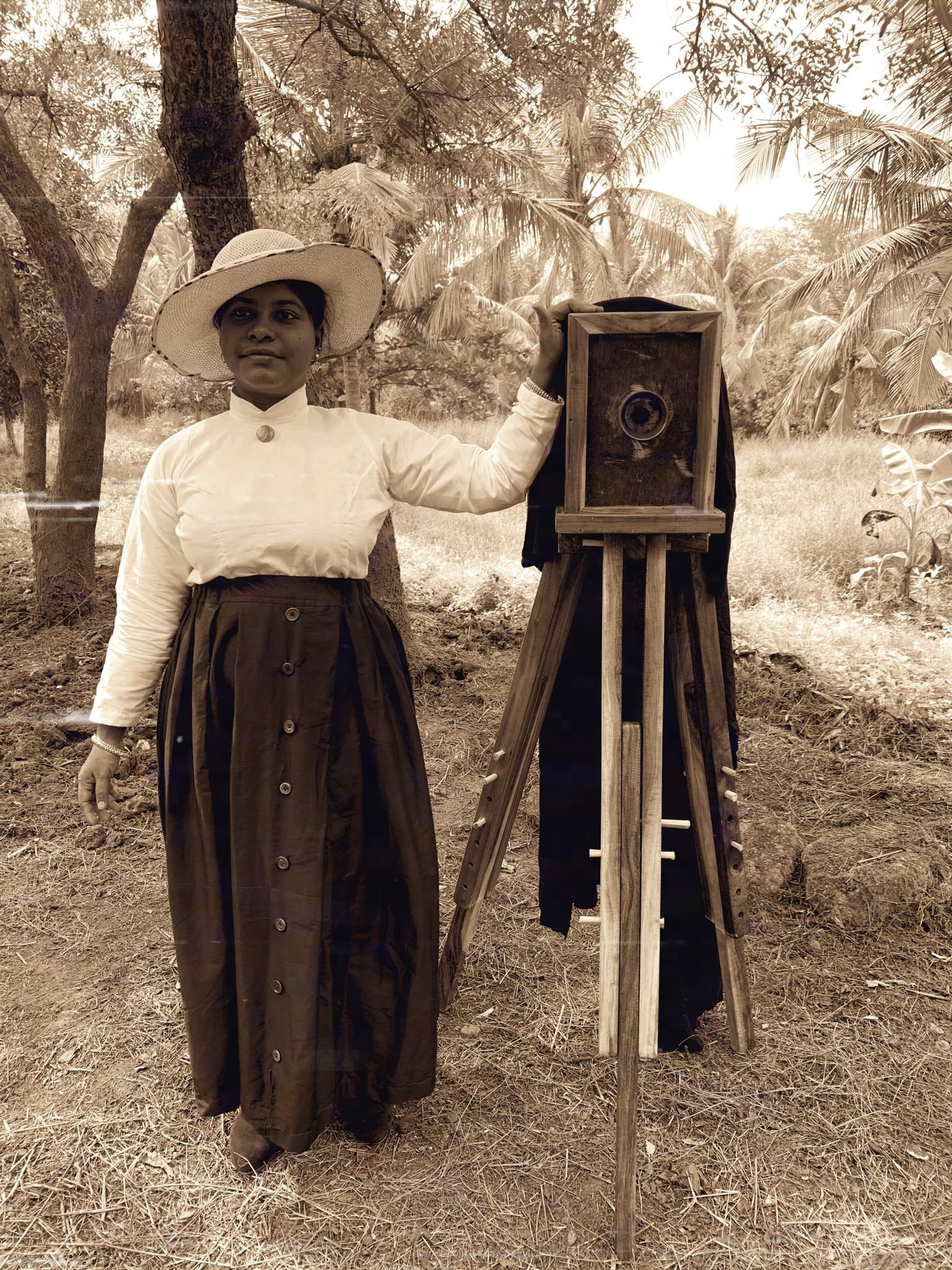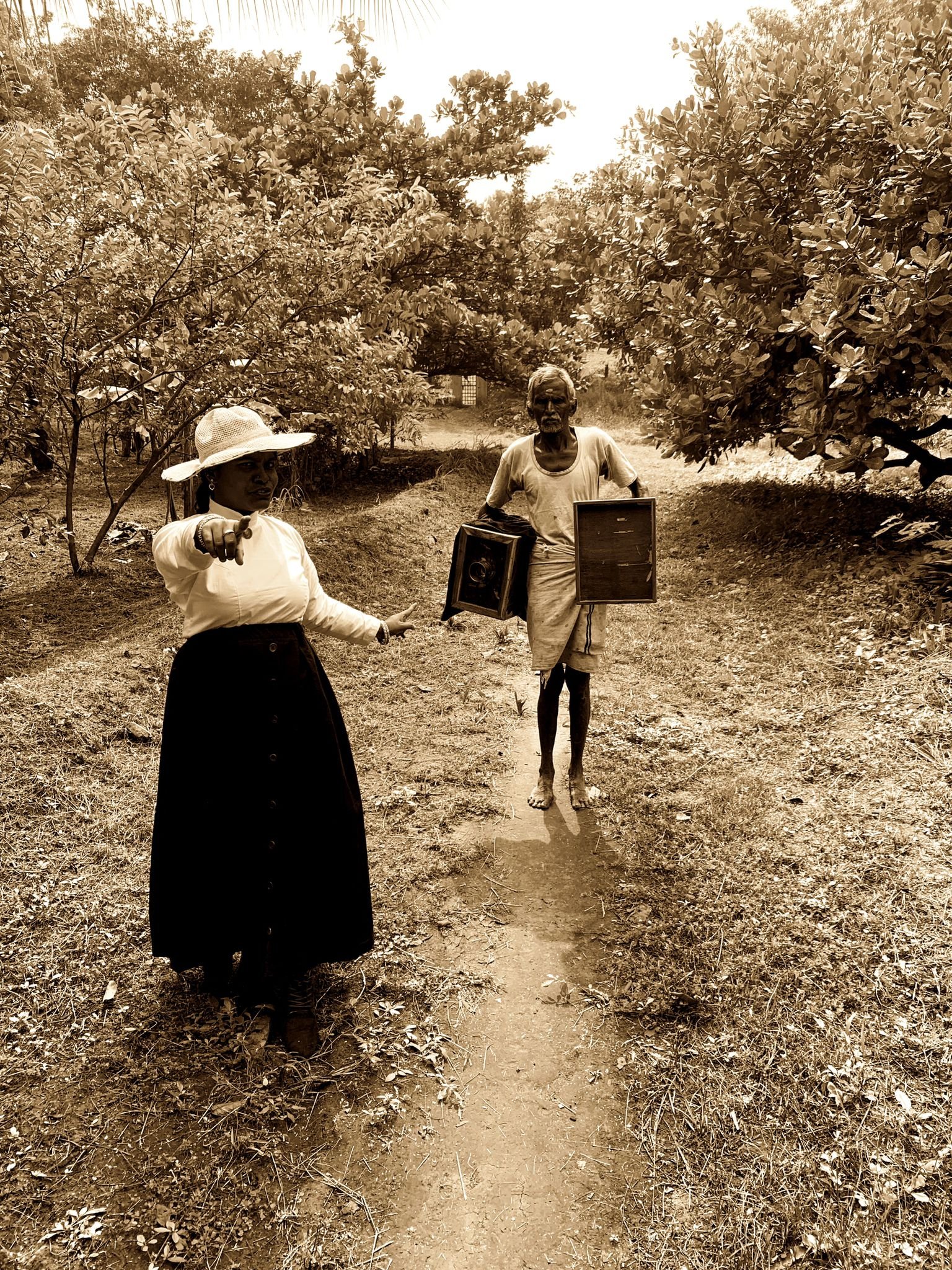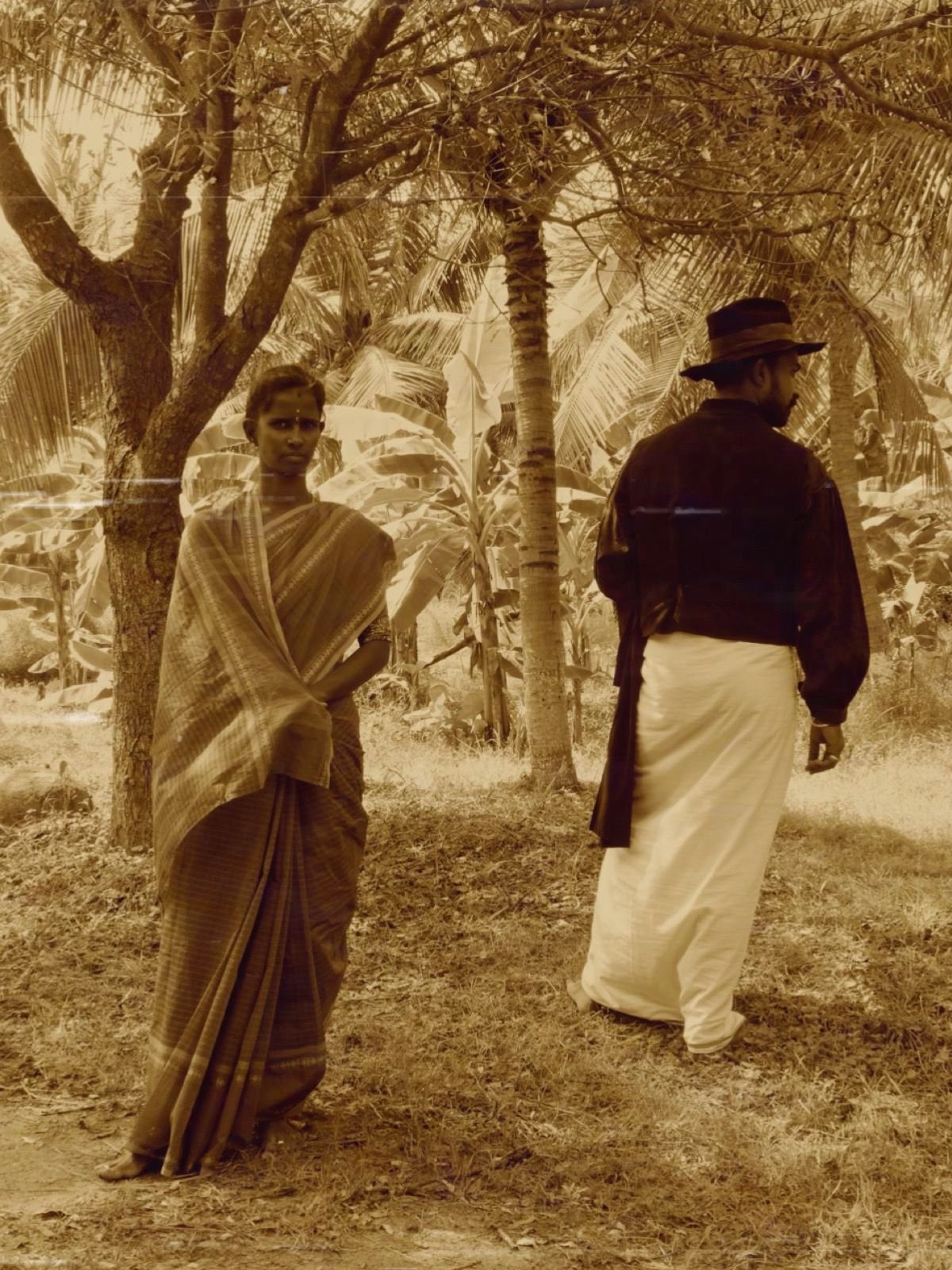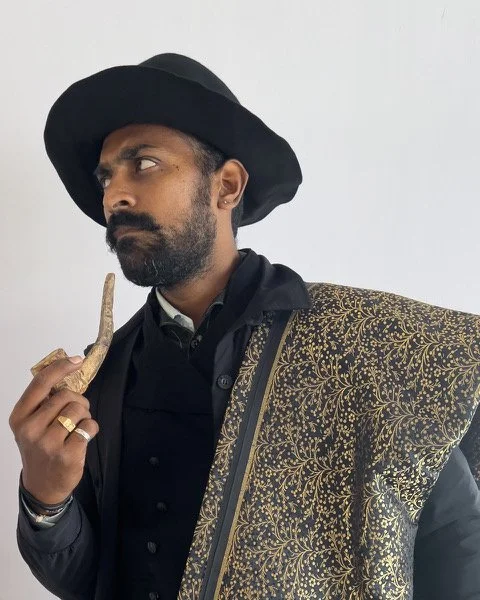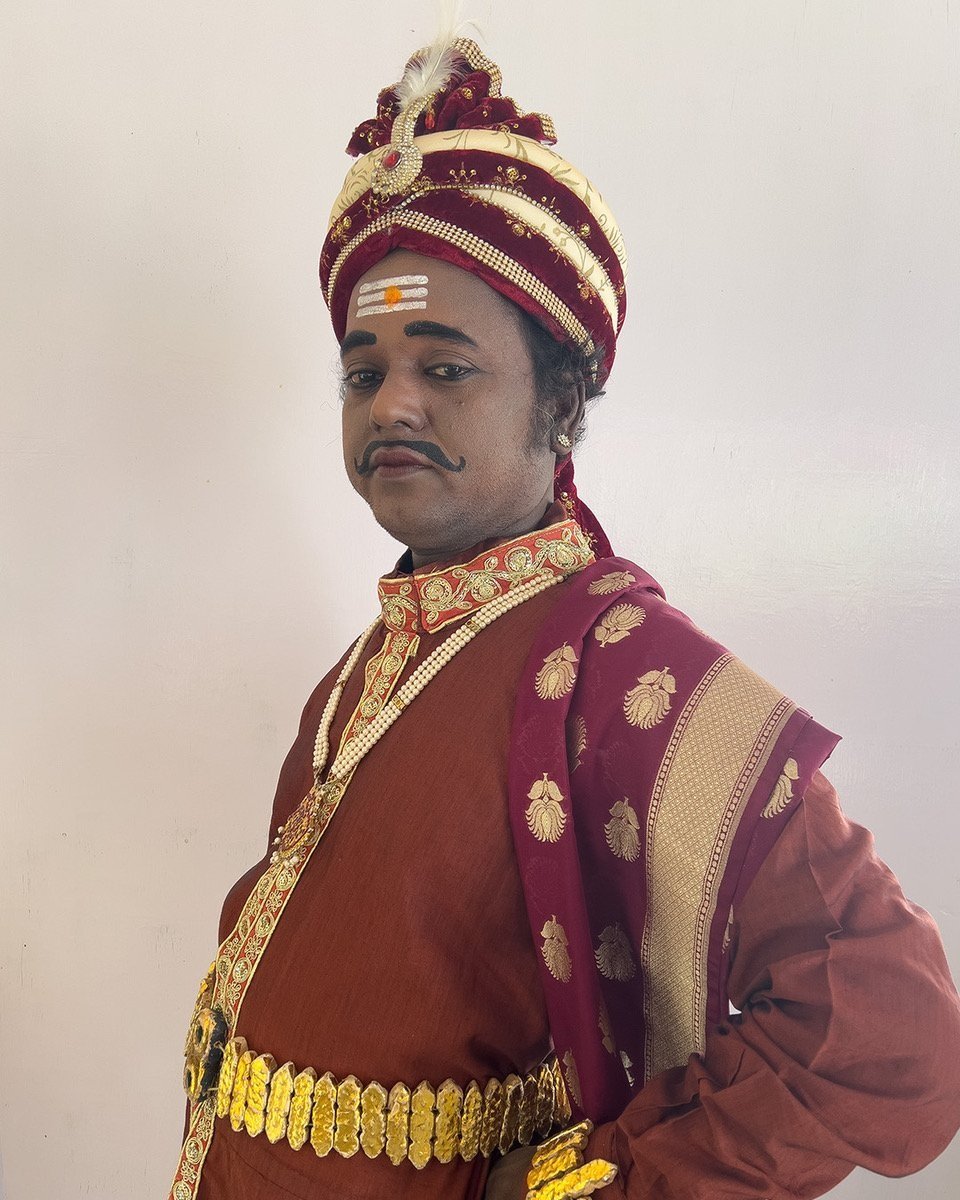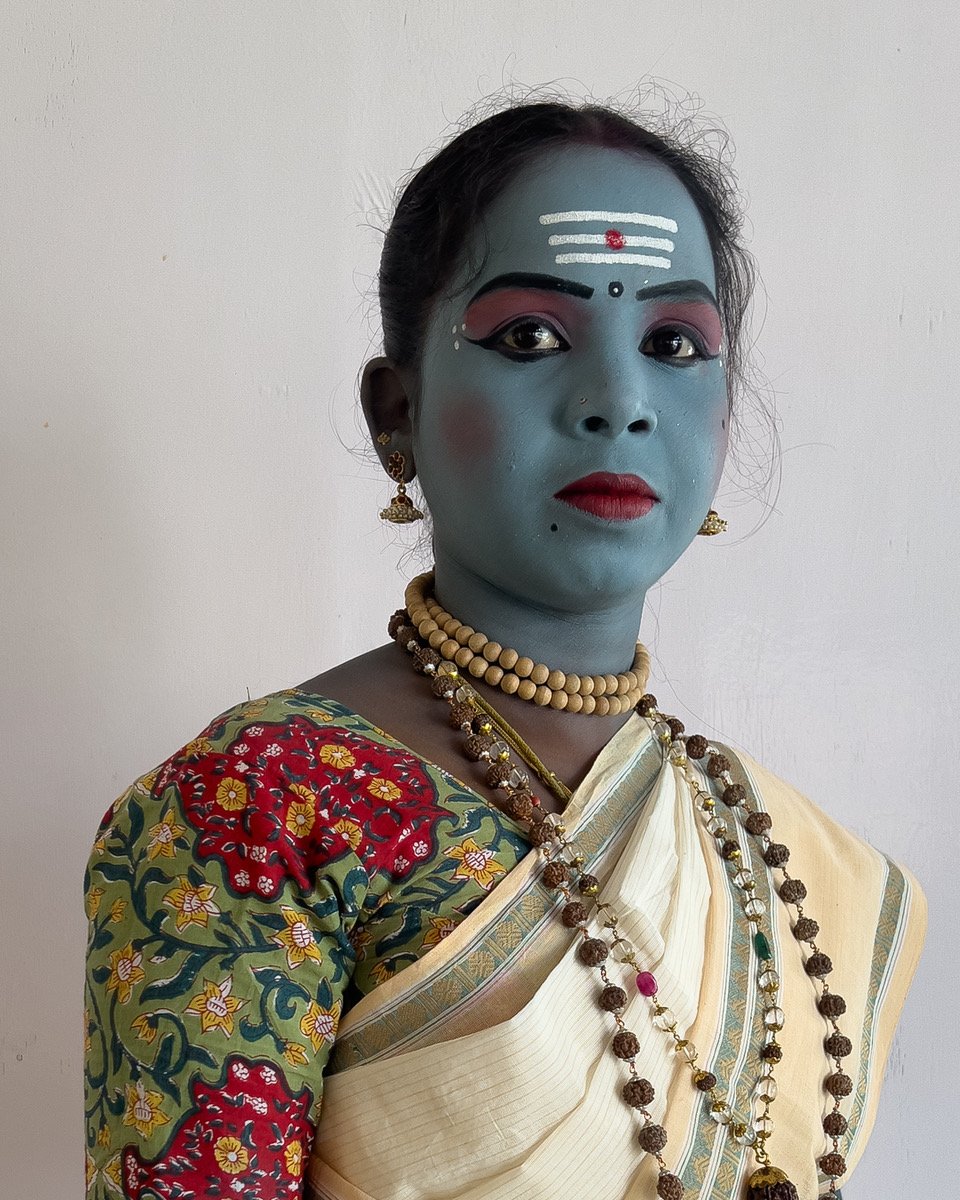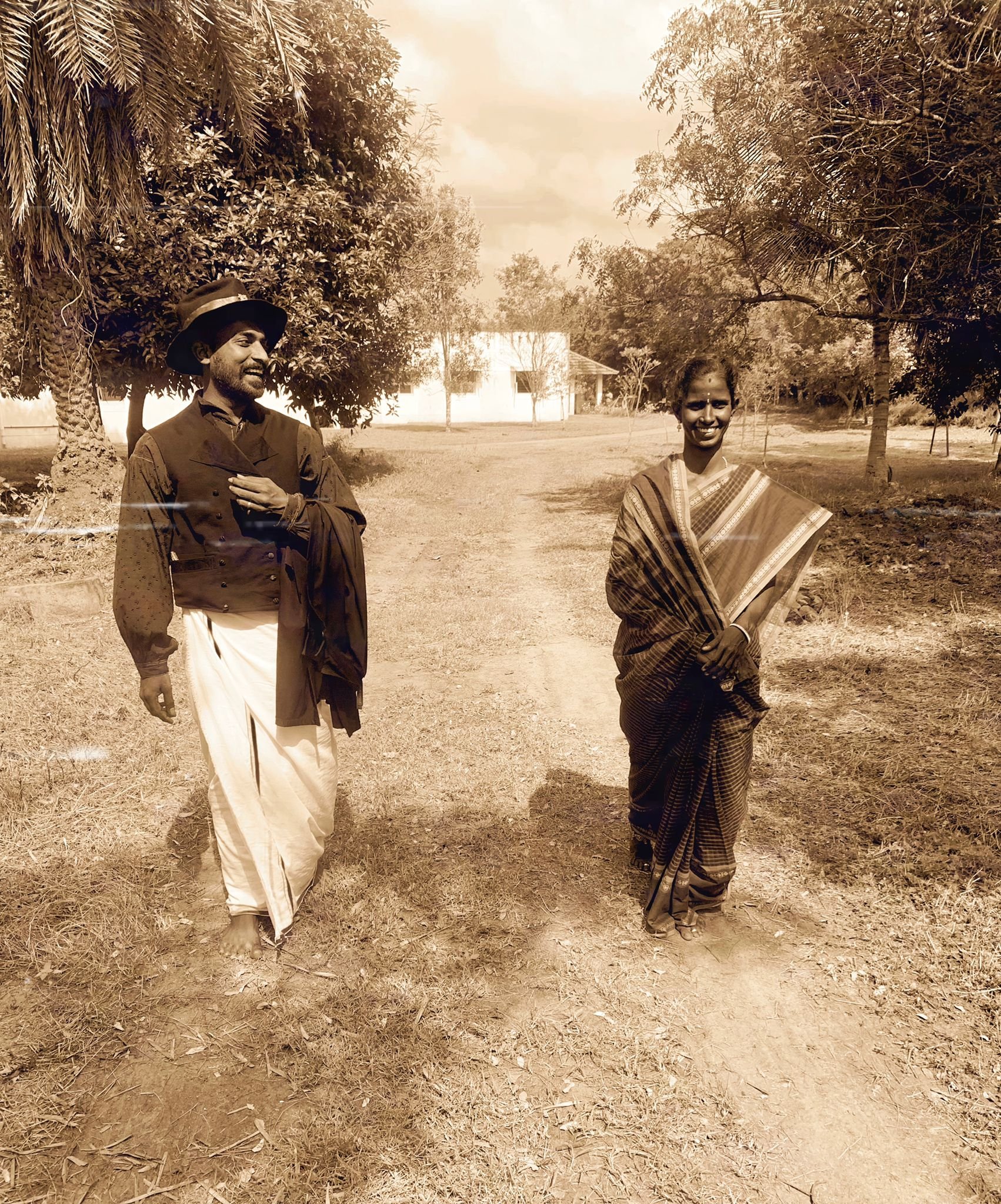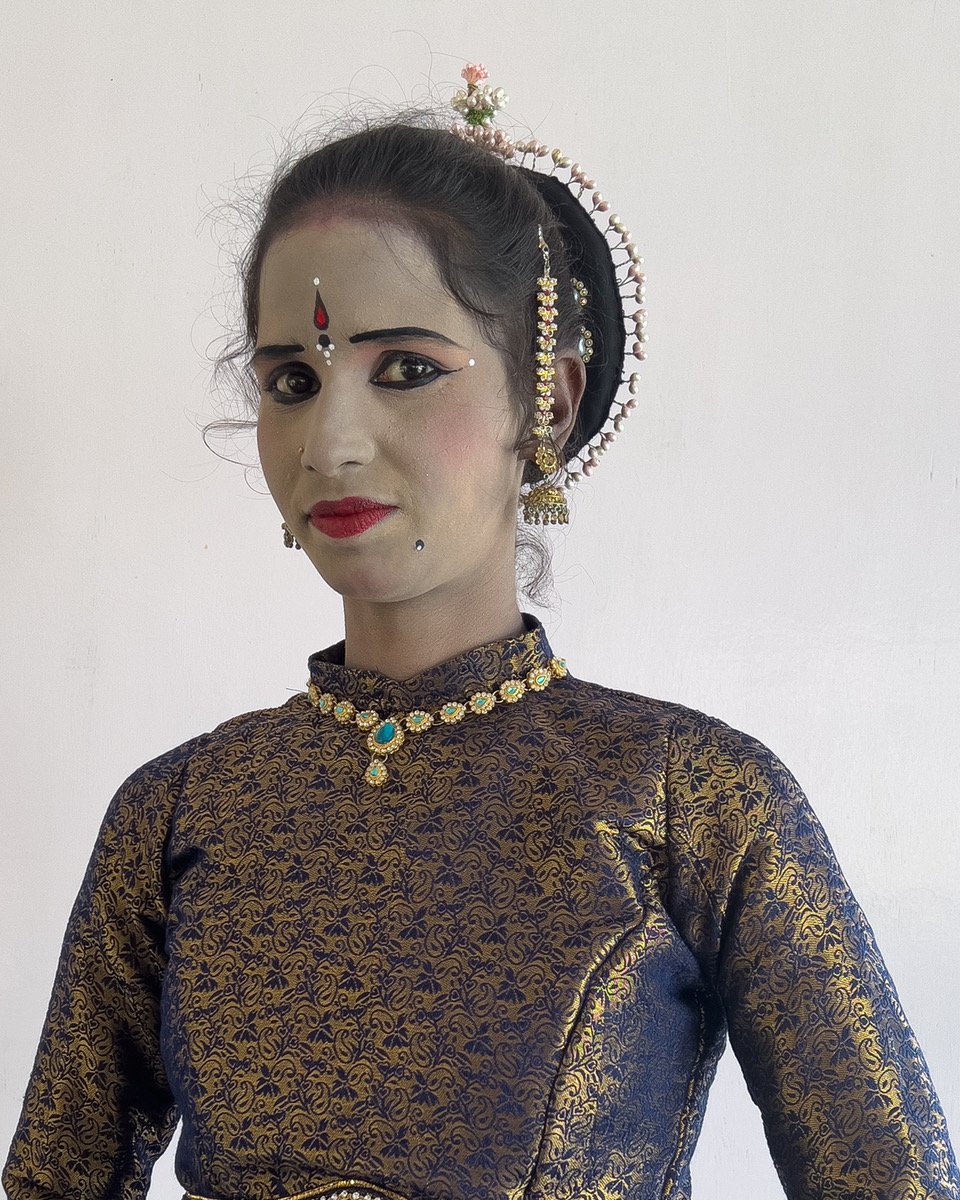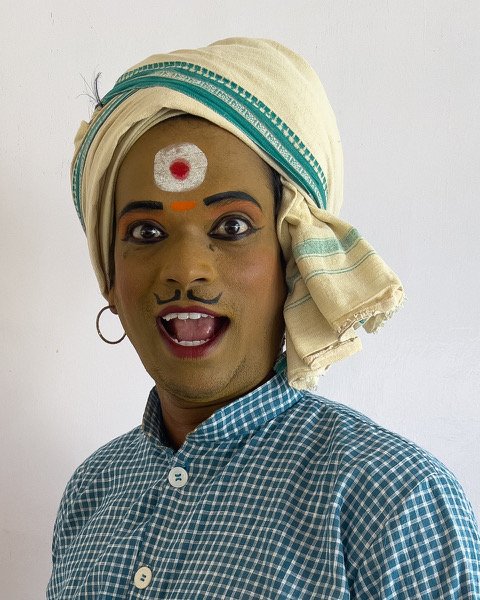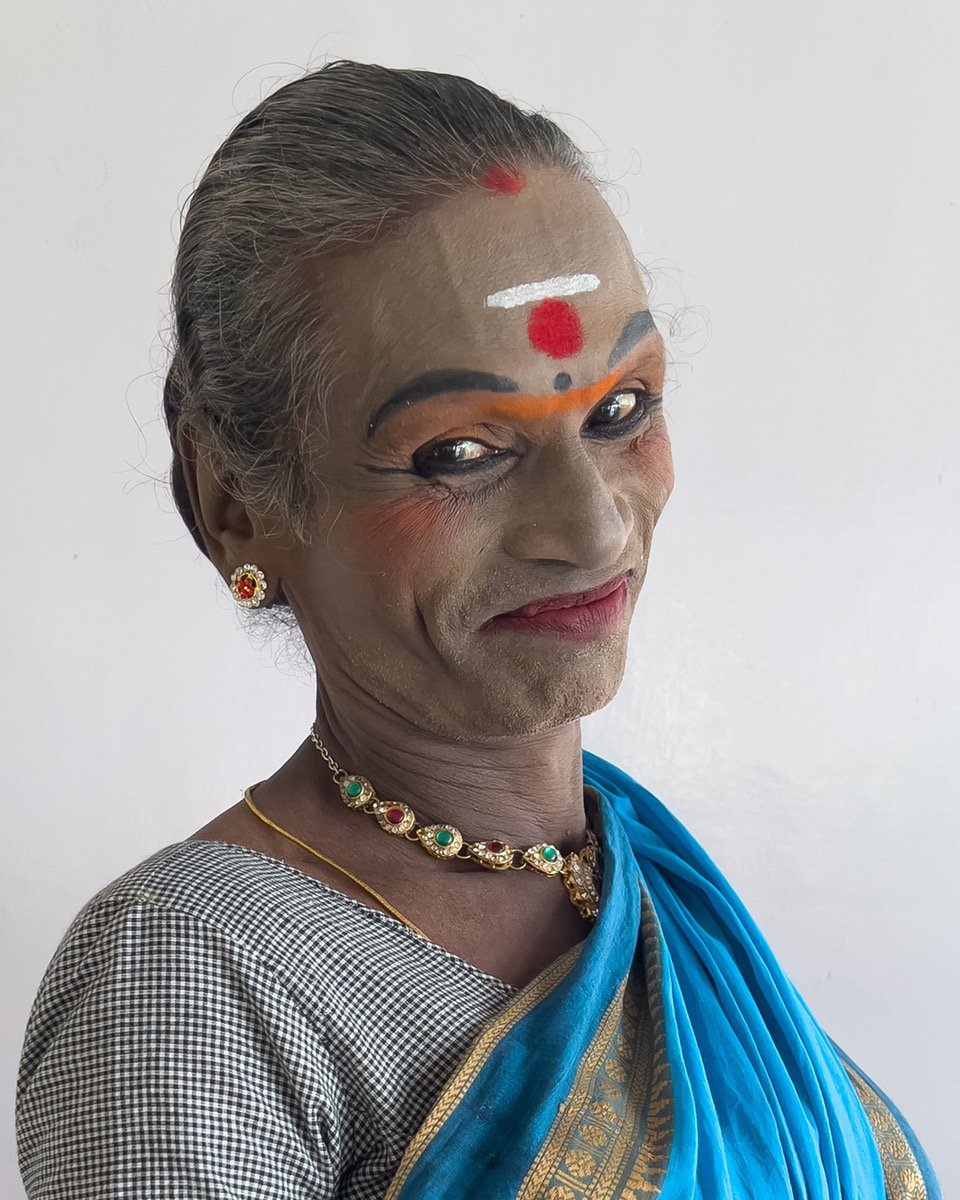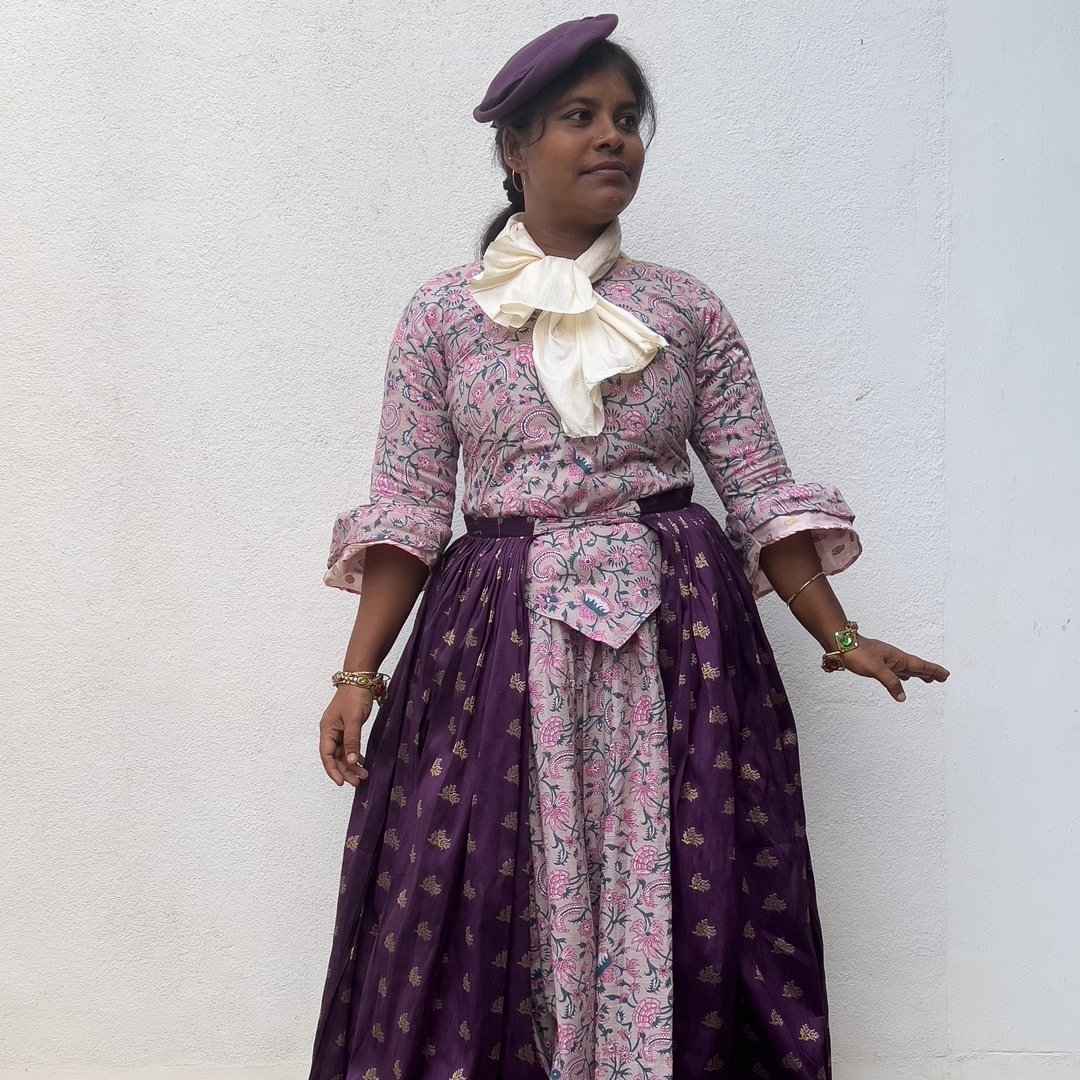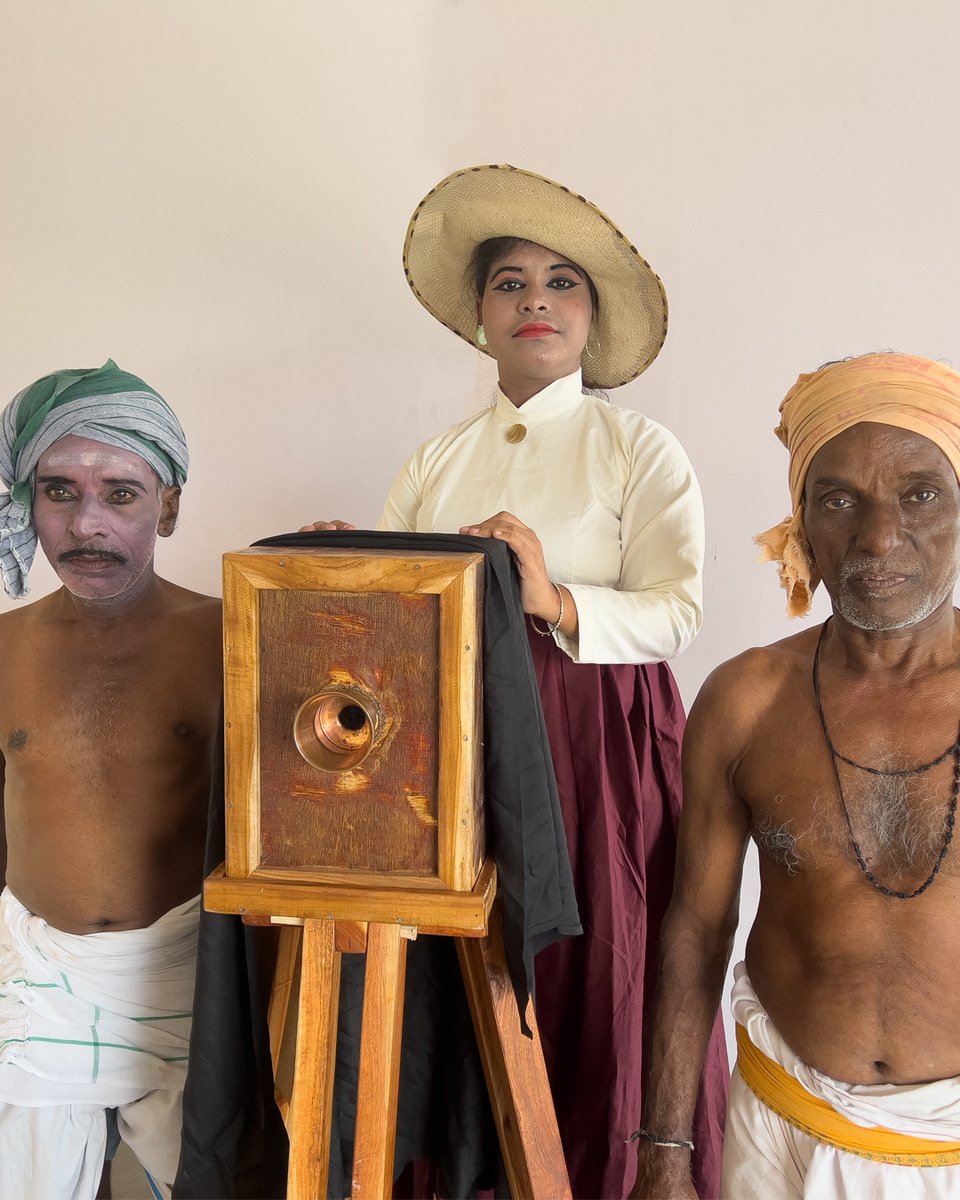
Pārvai
The play
Pārvai or The Gaze is a response to the 19th-century Western romantic ballet La Bayadère. It also draws inspiration from the travelogue of an 18th-century Dutch merchant, Jacob Haafner. Haafner was an anti-colonialist ahead of his time. He expressed a genuine love for India, its languages and nature, people, and their diverse cultural practices. Haafner writes about his passionate relationship with Mamia, a devadasi dancer, which lasted several years until her premature death, in his travelogue published in 1808.
In Pārvai, we shift the Western colonial perspective to the lives of ordinary people in 19th-century South India. The play gives voice to a female artist. She is portrayed, not as a fetishized oriental dancer, but as a professional Kattaikkuttu performer, even though we do not know for certain whether women performed during that time.
We have re-situated Jacob Haafner to the 19th century, where an interracial love story unfolds between him and the actress amidst the backdrop of the Madras Great Famine. This devastating event occurred from 1877 to 1878, coinciding with the premiere of La Bayadère in St. Petersburg. In our narrative, we transform a British male photographer, who documented the famine, into an arrogant female photographer who also desires Jacob.
History often emphasizes the actions and perspectives of the colonial administration and the indigenous elites, who either collaborated with or opposed colonial rule. The voices of the 'natives'—along with their demand for dignity and the fulfilment of their basic needs—are often overlooked. Their cultural expressions, such as Kattaikkuttu theatre, are trivialised and ridiculed as unsophisticated and barbaric. The Gaze seeks to create space for these ordinary people, allowing their voices and perspectives to enter the story. This acknowledgment enriches, complicates, and enhances the social landscape of late 19th-century India.
Pārvai or The Gaze (2024)
Tamil script: P. Rajagopal
Research: Hanne M. de Bruin
Costume design: Hanne M. de Bruin in collaboration with R. Mahalakshmi
Photography & video: Sue Rees
The playscript of Pārvai was published in December 2024 by Kalachuvadu Publications, Nagercoil.
Follow Rajagopal & Hanne during the making of this experimental production
↓
Introducing பார்வை (Pārvai)or The Gaze
In collaboration with Het Nationale Ballet in Amsterdam; supported by the Netherlands Embassy in New Delhi; conceptualized by Hanne M. de Bruin & P. Rajagopal; Tamil script: P. Rajagopal
1 | An Indo-Dutch cultural venture
19th century Ballerina Marie Taglioni
Photo credit: National Portrait Gallery, London
2 | David and Goliath
Village audience watching an all-night Kattaikkuttu performance.
Photo credit: Kattaikkuttu Sangam
3 | The bayadère and an 18th century Dutch merchant
Jacob Haafner, Reize in eenen Palanquin, Amsterdam 1808.
4 | Famine and a British photographer
Inmates of a relief camp during the famine 1876-1878 in Madras photographed by Willoughby Wallace Hooper.
Photo source: https://www.flickr.com/photos/elcaarchives/5632054529 | Wikipedia, the free encyclopedia
5| Introducing the characters
Devadasi, Indian dancer, image in Jacob Haafner’s Reize in eenen Palanquin 1808.
7| The two Annas
Nikiya performs her solo in the second act of the Bolshoi Ballet’s “La Bayadère” | © photo by Damir Yusupov [https://www.artintercepts.org/2019/02/02/tradition-is-a-good-thing-but-bolshois-bayadere-is-out-of-touch/]
12 | Rehearsal detail 2
Reconstructing one of Willoughby Wallace Hooper’s photographs of the Great Madras Famine.
13 | The sound of starvation
P. Sasikumar playing the mukavinai, the wind instrument that contributes to Kattaikkuttu’s characteristic sound scape.

